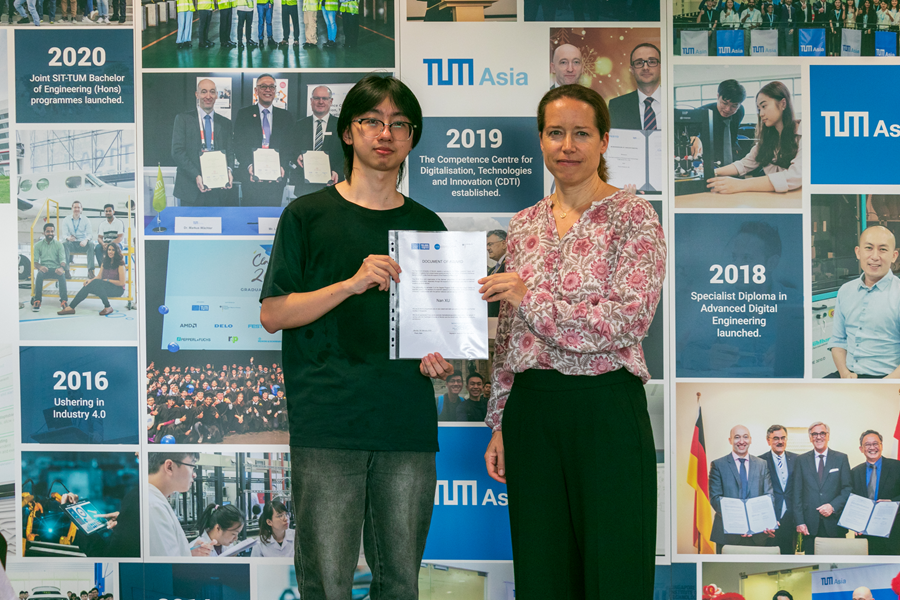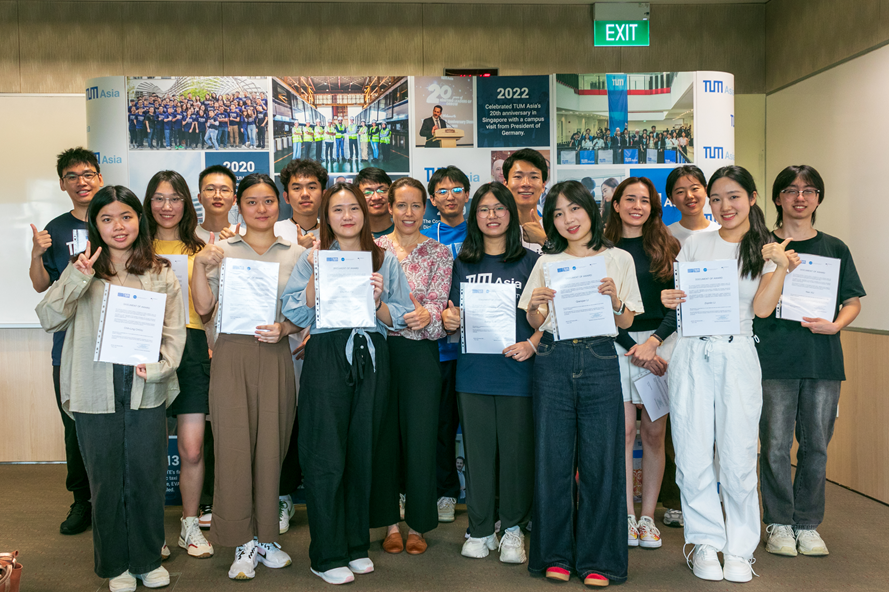
In the competitive world of integrated circuit (IC) design, finding the right educational path can be transformative. For one TUM Asia student, the journey from uncertainty to success was paved with determination, adaptation, and crucial support from the DAAD scholarship.
Finding Clarity Among Circuits: A Student’s Turning Point
Like many students finishing their undergraduate studies, Xu Nan faced a crossroads. After exploring robotics during his final year project and finding it challenging, he discovered an unexpected aptitude for integrated circuit design—a field many of his classmates found intimidating.
“My classmates all agreed these courses were hard to understand,” he recalls. “In contrast, I thought this was not 100 percent incomprehensible.”
This realisation led him to TUM Asia’s Master of Science in Integrated Circuit Design, choosing Singapore over London despite having offers from both. While tuition costs initially influenced his decision, the internship opportunities offered by TUM Asia ultimately proved decisive in shaping his future.
Triple Recognition: How DAAD Transformed More Than Finances
The German Academic Exchange Service (DAAD) scholarship became a game-changer in his educational journey. After receiving three DAAD scholarships throughout his Master’s programme, he experienced not just financial relief but also a profound boost in confidence.
“It was really encouraging for me,” he shares. “Not only was it recognition of my efforts, but it was also proof that I could survive inside this industry.”
The scholarship covered his rent and living expenses, allowing him to focus entirely on his studies. Beyond the financial benefits, the prestige of being a DAAD scholar opened doors during his internship search and job interviews.
“For an interviewer meeting for the first time, these things are the fastest way to screen,” he explains. “It helped me prove that I am a good learner and adaptable to my environment—qualities that are important in the workplace.”
Beyond Textbooks: Hands-On Learning That Makes the Difference
TUM Asia’s unique approach to education resonated with Xu Nan. The intensive two-week course structure followed by immediate examinations proved more effective than the traditional end-of-term exam period he experienced during his undergraduate years.
“During my bachelor’s, I needed to review four to five courses from beginning to end in the last month. This was exhausting,” he reflects. “At TUM Asia, there’s more revision time allocated to each course, and the exams taken straight after the class make better use of what I remember.”
He particularly valued the practical laboratory components of the programme, which bridged the gap between theoretical knowledge and real-world application.
“Going to the computer and designing is completely different than imagining with a textbook,” he notes. “In practice, we encounter various problems that we need to solve. Without actual practice, we are not capable of solving the problems encountered in projects.”

From Self-Doubt to Self-Assurance: Unexpected Personal Transformation
Perhaps the most valuable outcome of his TUM Asia experience was the personal growth it fostered. Coming from what he considered a less prestigious undergraduate institution, he initially felt anxious about measuring up to his classmates.
“I later found that I was quite capable of learning and could solve problems that many of my classmates could not,” he shares. His academic success and scholarship recognition dramatically boosted his self-confidence, positively impacting his subsequent internship search.
The programme also helped him develop a more balanced perspective on career paths within the integrated circuit industry. Unlike in China, where front-end design is often considered superior to back-end roles, he discovered Singapore’s more collaborative approach.
“There is no certain job that is superior within the entire IC field in Singapore. Everyone has to work together to complete the entire project,” he realised—a perspective that helped him confidently accept a mid-to-back-end position internship.
Insider Tips: Navigating Your Own TUM Asia Journey
For prospective students considering TUM Asia’s programmes, Xu Nan offers practical advice:
“Applying for DAAD is a must, whether successful or not. If you see someone else get a scholarship and you don’t apply for it, you will be very regretful.”
He emphasises the importance of strong English skills to keep pace with the fast-moving courses and recommends preparing for the programme’s intensive examination schedule.
“Finding an internship is likely to take a long time, and there will be a lot of frustration during the process,” he warns. “You need to keep your mind at ease and not be particularly anxious.”
From Classroom to Career: Building on TUM Asia’s Foundation
Now securing valuable industry experience through his internship, Xu Nan looks forward to continuing his career growth with the same company after graduation. His story exemplifies how TUM Asia’s industry-focused approach, combined with DAAD scholarship, can transform educational experiences and launch promising careers in cutting-edge fields.
For students considering their next steps in technical education, this journey demonstrates how finding the right programme—and the right support—can make all the difference in turning uncertainty into opportunity.
Discover our Master of Science in Integrated Circuit Design, explore available scholarships, and take the next step toward achieving your academic and career goals!
